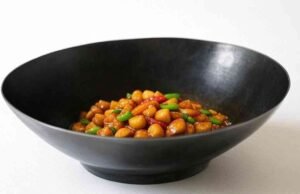Have you ever taken a sip of coffee that felt unusually sour or surprisingly smoky? That unexpected flavor probably wasn’t from the beans alone—it was likely the roast level at play. Whether you’re exploring pour-over brewing or dialing in an espresso shot, understanding roast levels can completely shift your coffee experience.
Let’s dive into how roast levels—from light to dark—impact the taste in your cup and how to choose the right one for your preferences.
Light Roast: Bright, Fruity, and Complex
Light roasts are roasted just enough to reach what’s known as the “first crack,” when beans begin to pop from internal pressure. The result? A brew that often tastes lively and fruity.
Flavor Profile:
- Bright acidity
- Floral and fruity notes
- Light body
- Often highlights origin characteristics
These roasts are best appreciated with brewing methods like pour-over or AeroPress, which let those subtle nuances shine. If you enjoy tasting the terroir of coffee—where it was grown, the soil, altitude—light roast is your friend.
Quick tip: If your coffee tastes sour, it might be under-extracted. Try a finer grind or longer brew time.
Medium Roast: Balanced and Smooth
Medium roast hits the sweet spot for many. It reaches the second crack or just before, allowing sugars in the bean to caramelize more than in light roasts.
Flavor Profile:
- Balanced acidity and sweetness
- Notes of nuts, chocolate, or caramel
- Medium body
- Less origin-forward but very approachable
This roast works beautifully in drip machines, French press, and espresso. If you like your coffee smooth with a touch of richness, medium is a great everyday choice.
Personal note: I used to think all good coffee had to be light roast—until a barista handed me a medium roast Ethiopian that tasted like honeyed almonds. I’ve kept a bag around ever since.
Dark Roast: Bold, Rich, and Intense
Dark roasts go well beyond the second crack, producing beans that are visibly oily and darker brown. They offer a consistent, roasted flavor that many associate with traditional café coffee.
Flavor Profile:
- Low acidity
- Bittersweet, smoky, or chocolate notes
- Full body
- Roast flavors overpower bean origin
These are perfect for lovers of intense flavors—especially in espresso or moka pots. But be warned: too dark a roast can sometimes taste burnt or ashy if not brewed carefully.
Choosing What Works for You
Flavor is personal, and there’s no universal “best” roast. Ask yourself:
- Do I enjoy vibrant, citrusy notes? Try light roast.
- Do I like a smooth, balanced cup with some sweetness? Go medium.
- Am I after bold, powerful flavor with a rich finish? Dark roast is your pick.
Don’t be afraid to explore. Grab sample packs or visit a local roaster who offers tasting flights. Your taste buds might surprise you.
Final Thoughts
Understanding coffee roast levels is more than a geeky detail—it’s the gateway to brewing coffee you genuinely love. The more you explore, the more control you gain over your daily cup. So next time you pick up beans, don’t just check the origin—look at the roast level and imagine the flavors waiting to be brewed.





